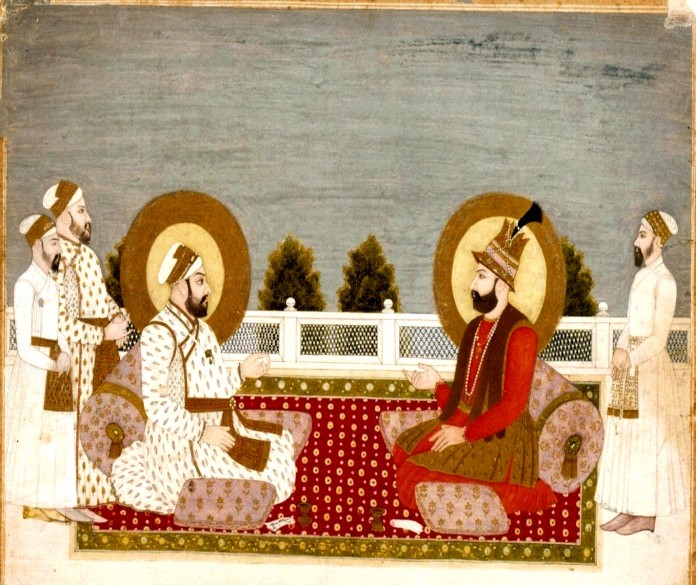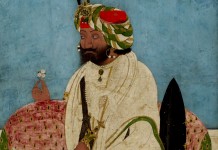Nasir-ud-Din Muhammad Shah ascended the throne of Delhi in 1719 A.C. A youth of 17, Muhammad Shah was extremely handsome, large of limb and strong. But his sedentary life of inactivity, he became a confirmed invalid by the time he was only 40. The evil was aggravated by his taking opium, and this drug habit made him weak and emaciated till at last it became impossible for him to move from his palace. As the fires of youthful passions burnt themselves out in Muhammad Shah, says Sir Jadu Nath Sarkar, a deep melancholy settled on him, and towards the end of his life he loved to frequent the society of faqirs and t hold long converse with them, discussing spiritual questions like an initiate. Though he neglected his public duties, “he was free from insolent pride, caprice and love of wanton cruelty. Nor did he lack consideration for others.” He showed Courage “When instead of fleeing to Bengal as advised by his friends, he voluntarily went into Nadir Shah’s captivity in order to save his people and capital from the horrors of violent assault and forcible subjugation to incensed victors.”
It cannot be denied that the emperor’s personal character up to now had largely accounted for good administration in distant provinces. But Muhammad Shah and his nobles abandoned themselves to a life of ease and pleasure. Aurangzib ‘Alamgir had left a completely settled empire at his death, says Colonel Alexander Dow. Its disintegeration commenced in the reign of Muhammad Shah (1719-1748 A.C.) who is said to have once thrown an urgent report of an important conspiracy into a barrel of wine as useless brother. Muhammad Shah did not recover from this effect till two days after.
Muhammad Shah however, “never gave his consent to shedding blood or doing harm to God’s creatures. In his reign the people passed their lives in ease, and the empire outwardly retained its dignity and prestige. The foundations of the Delhi monarchy were really rotten, but Muhammad Shah by his cleverness kept them standing. He may be called the last of the rulers of Babur’s line, as after him the kingship had nothing but the name left to it.” Muhammad Shah died in 1748, having been on the throne for 29 years.
In Muhammad Shah’s reign, the history of Kashmir presents little else but a record of local riots and internecine struggles. Under him Kashmir entered upon a new phase of political life in that the Subadars completely abstained from ruling their provinces in person as already mentioned, and deputed trusted agents answerable to them for good conduct and administration.
Reference:
Sufi,G.M.D (1996). Kashmir Under The Mughals. Kashir: Being A History Of Kashmir(pp.289-290) Delhi:Capital Publishing House.
















